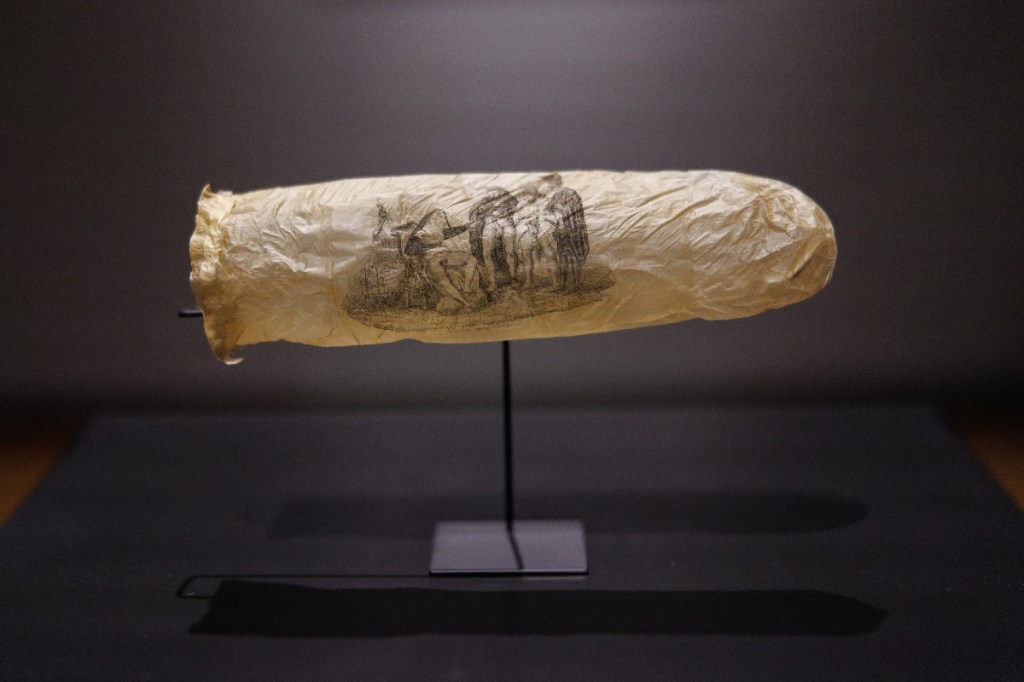Image via Ray Troll 2012
The Syfy Channel has hit upon a winning formula. Shark + [other scary thing] = profit. Sharknado reigns supreme as the apex of the model, but Ghost Shark, to be released on August 22, may well usurp it. Still, no fictional shark-based disaster could ever live up to the real life nightmare known as the Helicoprion.
This 20-foot-long ratfish burst onto the Carboniferous scene about 270 million years ago. Apparently bored with the conventional adaptations of the times, it went ahead and evolved a buzzsaw in its mouth. We know this because in 1899, a Russian geologist named Alexander Petrovich Karpinsky found its disembodied tooth whorl in Kazakhstan. At first glance, the fossil looked like a shelled ammonite, but closer inspection revealed shark teeth neatly packed together in a crazy death wheel of doom.
Videos by VICE
Photo via Wikimedia Commons
The discovery kicked off a debate that raged for over a century. It was essentially a long game of “pin the buzzsaw on the monster.” Karpinsky first posited the idea that the spiked spiral was rooted to the Helicoprion‘s upper lip, and then curled itself over the snout. In 1900, the American paleontologist Charles Rochester Eastman argued that carrying a giant murder wheel on its face would be too much of a drag, and suggested the feature was located somewhere along the animal’s spine. Since then, Helicoprion enthusiasts have imaginatively placed the whorl pretty much everywhere on the animal’s body: its tail, its snout, its dorsal fin, deep inside the throat, or coiled off of the lower jaw (a feature of the Helicoprion’s cousins, the eugeneodontids). The fact that there was nothing to work off of except the whorl itself made any guess as good as the others.
That changed in 1950, when Danish paleontologist Svend Erik Bendix-Almgreen discovered a gorgeous Helicoprion whorl near Montpelier, Idaho. This fossil, 9-inches-wide and crammed with 117 teeth, was speckled with lovely bits of cranial cartilage. This confirmed that the saw was actually lodged in the Helicoprion‘s mouth. Bendix-Almgreen concluded that it hung off the lower mandible like the world’s most badass lip ring.
It wasn’t until February 2013 that the true glory of the Helicoprion‘s snaggletooth was revealed. A team led by Leif Tapanila of Idaho State University examined the Bendix-Almgreen specimen with an ACTIS scanner, generating the first 3D model of its skull. Their report in Biology Letters finally pinned the buzzsaw correctly inside the monster’s mouth. The whorl completely dominated the Helicoprion‘s lower jaw – the upper mandible evolved into a gaping toothless arch to accommodate it. Even freakier, Tapanila speculates that when the animal closed its mouth around its prey, the whorl “rotated the teeth backwards in a rotational saw motion” which makes the buzzsaw analogy particularly apt. Subjecting its prey to death by bisection apparently worked well for the Helicoprion.
Image via Ray Troll 2013
In celebration of the finding, the Idaho Museum of Natural History recently launched an exhibit about these bizarre animals (it opened on June 22). Displayed alongside the game-changing specimen are several artistic depictions by Ray Troll, who has been obsessed with the Helicoprion for decades. We can only hope the exhibit inspires Syfy to get started on their own artistic take on the monster: Haunted Helicoprionado has a good ring to it.
More
From VICE
-

Photo by Rijksmuseum/Kelly Schenk -

Photo by Tibor Bognar via Getty Images -

De'Longhi Dedica Duo – Credit: De'Longhi -

We Are/Getty Images